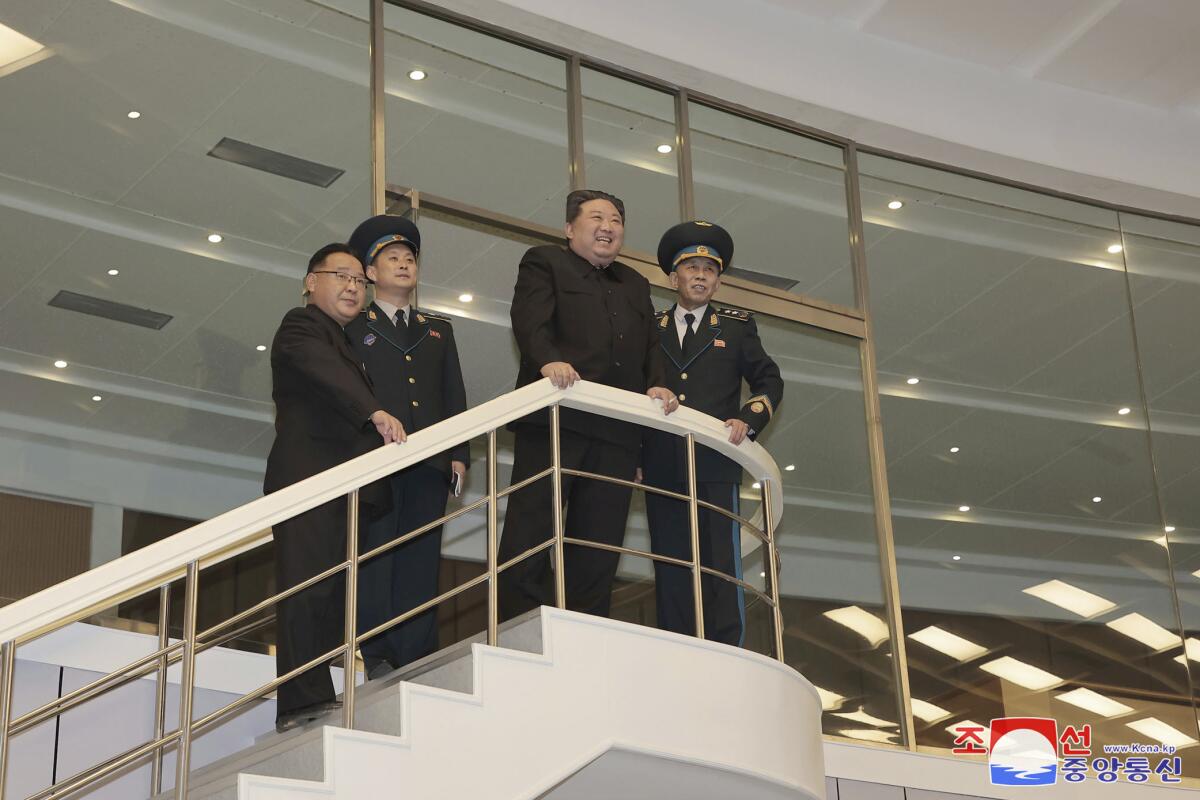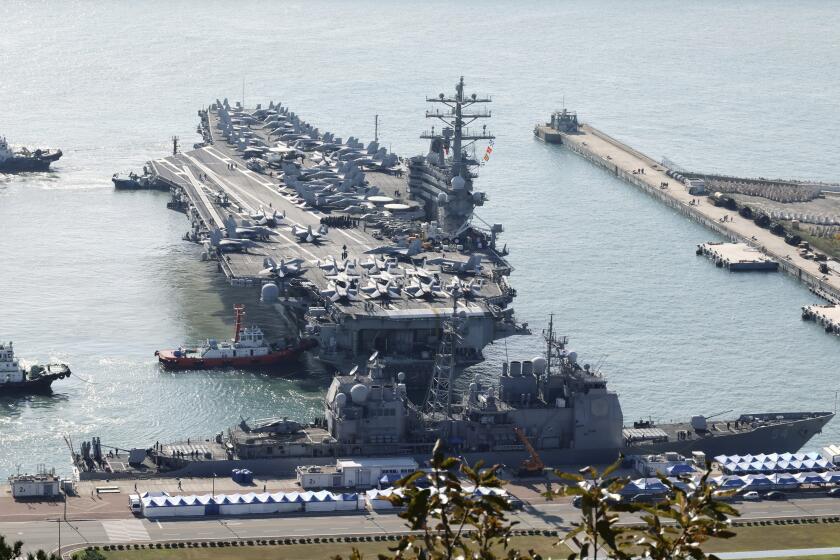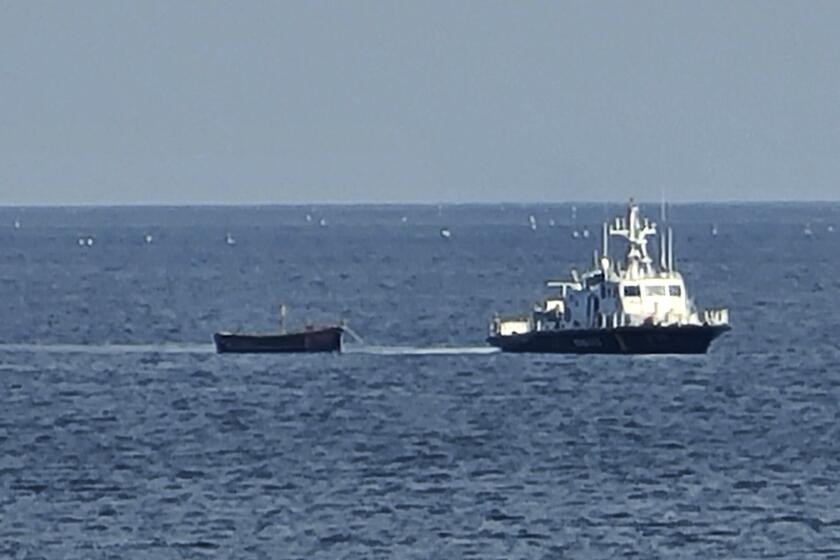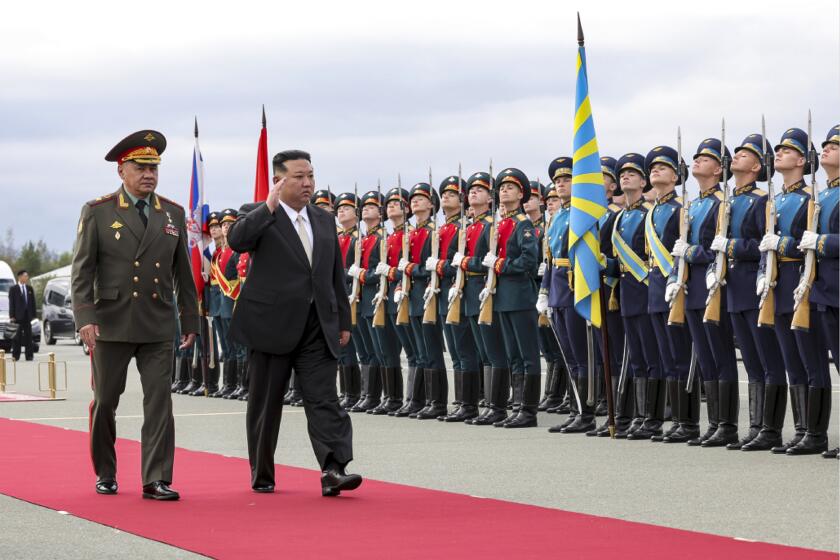South Korea partially suspends inter-Korean agreement after North’s satellite launch

SEOUL — South Korea decided to partially suspend an inter-Korean agreement and restart front-line aerial surveillance of North Korea, hours after Pyongyang claimed to have put its first military spy satellite into orbit in violation of United Nations resolutions, officials in Seoul said.
The South Korean announcement — which will probably infuriate North Korea — came as the North’s neighbors are trying to confirm whether the launch Tuesday evening was successful and whether the satellite can perform reconnaissance functions.
South Korea’s military said it concluded that the North Korean spy satellite had entered orbit as the North claimed. But it said it needed more time to verify whether the satellite works. Earlier, the Pentagon said it was assessing the success of the launch, while Japan stated that there had been no confirmation of the North’s report on the satellite entering orbit.
North Korea’s state media claimed that the spy satellite transmitted imagery showing space views of key military sites in the U.S. Pacific territory of Guam. It didn’t publicize the photos, and many experts remain skeptical about whether the North Korean satellite is advanced enough to conduct meaningful military reconnaissance.
Despite questions about the launch, the U.S. and its allies strongly condemned it. They believe it was meant to improve the country’s missile technology as well as establish a space-based surveillance system.
North Korea says it has a legitimate right to launch spy satellites to cope with what it calls intensifying U.S.-led threats. But U.N. Security Council resolutions prohibit any satellite liftoffs by North Korea, viewing them as covers for testing its long-range missile technology.
North Korea is lashing out at the arrival of a U.S. aircraft carrier battle group in South Korea, calling it a provocation.
Heo Tae-keun, South Korea’s deputy minister of national defense policy, said at a televised briefing that the North’s latest satellite launch was not only a clear violation of the U.N. resolutions but also “a grave provocation that threatens our national security.”
Heo said South Korea decided to respond by partially suspending the 2018 inter-Korean agreement Wednesday and resuming aerial surveillance activities at the border. He added that South Korea would “promptly and strongly punish” North Korea if it uses Seoul’s move on the inter-Korean agreement as a pretext to launch another provocation.
The 2018 agreement, struck during a short-lived era of reconciliation between the rival Koreas, created buffer and no-fly zones along the countries’ heavily fortified border. Under the deal, the Koreas were required to halt front-line aerial reconnaissance and live-fire exercises. They also removed some of their guard posts and landmines at border areas.
The deal drew criticism from conservatives in South Korea, with critics saying it significantly restricted the operation of the country’s aerial surveillance assets, which are far superior to North Korea’s. They also said the deal heavily benefited North Korea, because it called only for mutual reductions of conventional military strength while leaving the North’s growing nuclear arsenal intact. South Korea has no nuclear weapons.
South Korean officials say four people believed to be North Korean defectors were found in a small wooden boat near the two Koreas’ sea border.
The brief Korean rapprochement period evaporated soon after the collapse of broader nuclear diplomacy between North Korea and the U.S. in 2019. North Korea has since ramped up missile tests to modernize its weapons arsenal, prompting the U.S. and South Korea to expand their defense exercises in response.
When the North’s National Aerospace Development Administration announced what it called a successful launch of its Malligyong-1 spy satellite, it said the satellite would help improve the North’s war-readiness in the face of “the enemies’ dangerous military moves.” The agency said North Korea would soon launch several more spy satellites to better monitor South Korea and other areas.
North Korean leader Kim Jong Un watched the satellite launch on site. According to state media, Kim later visited the Pyongyang control center of the nation’s space agency, where he was briefed that the Malligyong-1 satellite would officially begin its reconnaissance mission from Dec. 1, after a period of fine-tuning.
At the center, Kim was also presented with the aerospace photos of Andersen Air Force Base and other U.S. military facilities in Guam, taken Wednesday, the North’s official Korean Central News Agency said.
North Korean leader Kim Jong Un is on his way home from Russia after a trip that triggered global concerns about weapons transfer deals with Putin.
It was not possible to independently confirm those images. Last December, when North Korea released black-and-white satellite photos of South Korean cities following a test launch, many experts said the imagery was too crude for a surveillance purpose.
North Korea used the same satellite in two failed launches in May and August. South Korea’s military retrieved debris from the first launch and concluded at the time that the satellite wasn’t sophisticated enough to perform military reconnaissance.
In 2012 and 2016, North Korea placed Earth observation satellites into orbit, but experts say neither has ever transmitted imagery back to North Korea.
Before Tuesday’s launch, South Korean officials said North Korea was probably receiving Russian technological support for its spy satellite launch program as part of the two countries’ push to boost their partnership.
News Alerts
Get breaking news, investigations, analysis and more signature journalism from the Los Angeles Times in your inbox.
You may occasionally receive promotional content from the Los Angeles Times.
The U.S., South Korea and others accuse North Korea of shipping conventional arms to support Russia’s war in Ukraine in exchange for receiving high-tech Russian technologies to enhance its own military programs. North Korea and Russia have denied the accusations.
A spy satellite is among an array of sophisticated weapons systems that Kim wants to introduce. Experts say he would eventually aim to use his enlarged arsenal to win sanctions relief and other concessions from the U.S. when diplomacy resumes.
Some civilian experts said North Korea’s Malligyong-1 satellite is probably capable only of detecting big targets like warships or planes. But by operating several such satellites, North Korea could observe South Korea at all times, they said.
More to Read
Sign up for Essential California
The most important California stories and recommendations in your inbox every morning.
You may occasionally receive promotional content from the Los Angeles Times.













